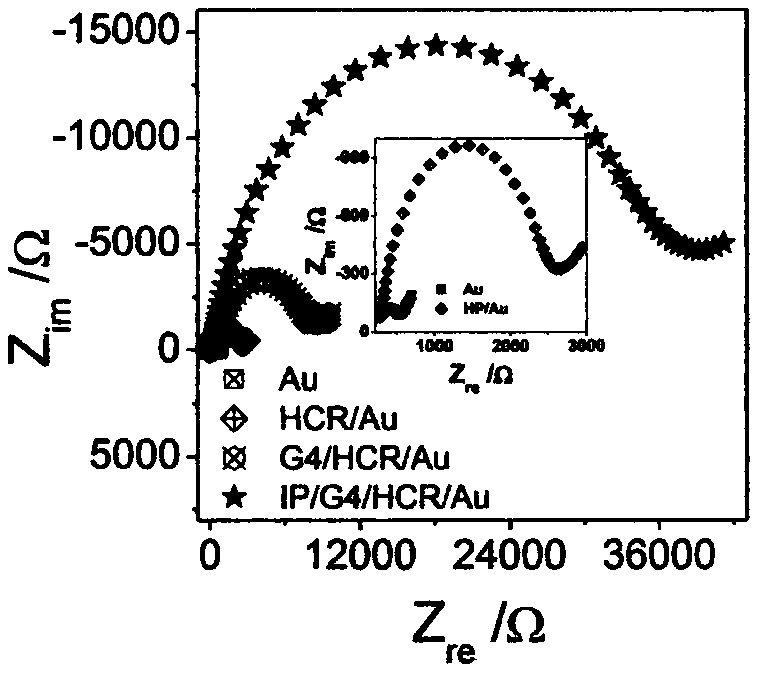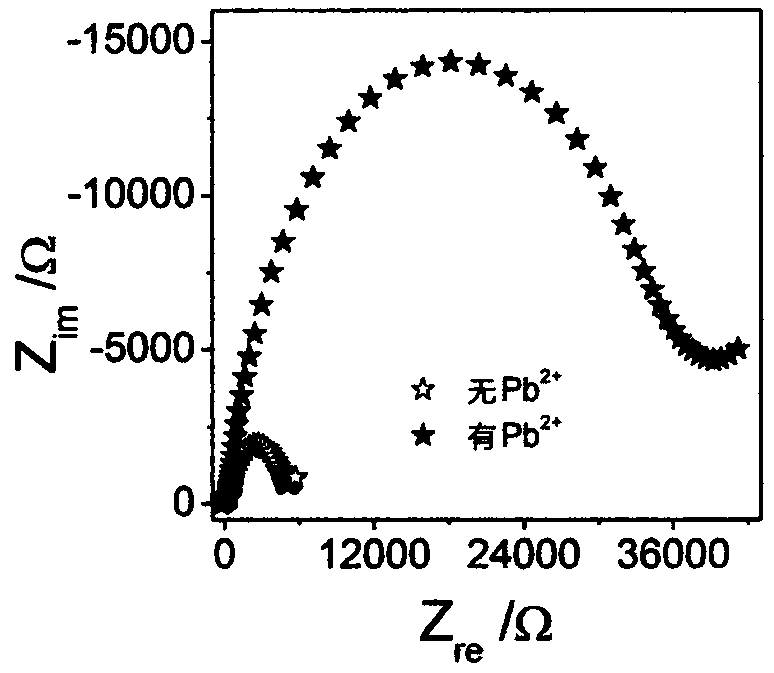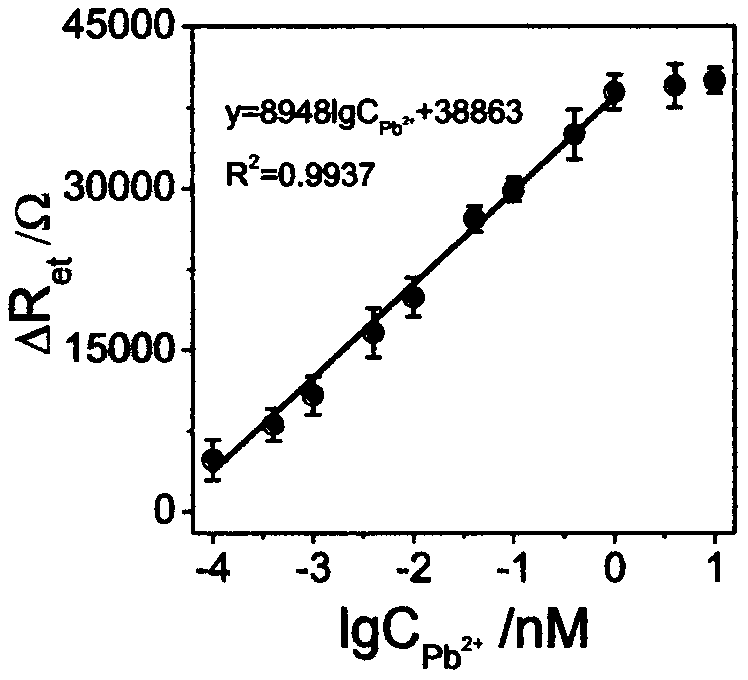Lead ion alternating-current impedance sensor research based on hybridization chain reaction (HCR) and TdT modulation double signal amplification
A technology of hybridization chain reaction and double signal, which is applied in the field of electrochemical impedance sensor and its detection, the preparation and application of lead ion AC impedance sensor, which can solve the problems of electron transfer hindrance, electrochemical impedance signal amplification, etc., and achieve fast detection speed , easy to operate, high sensitivity effect
- Summary
- Abstract
- Description
- Claims
- Application Information
AI Technical Summary
Problems solved by technology
Method used
Image
Examples
Embodiment 1
[0025] The preparation of embodiment 1 sensor
[0026] (1) Au: First, Al with a particle size of 0.05 μm 2 o 3 The suspension was polished on a polishing cloth, then ultrasonically treated in water for 3 min, and then washed slowly with distilled water three times to obtain a clean gold electrode (Au).
[0027] (2) HCR / Au: a. Au was blown dry with nitrogen gas and assembled in HP (3μL, 0.2μM) solution for 6h, then washed slowly with distilled water; then soak the electrode in mercaptohexanol (MCH) (2mM) aqueous solution 24min, wash slowly with distilled water; b. Mix 2 μL 10×Tris reaction buffer, hairpin probe H1 (1 μL, 0.5 μM), hairpin probe H2 (1 μL, 0.5 μM) and drop them on the electrode surface in a , reacted at 35°C for 1h, washed with distilled water, and marked as HCR / Au.
[0028](3) G4 / HCR / Au: a. Control the total volume of TdT reaction solution to 2.5 μL: add TdT buffer, dATP (0.4 μL, 10 mM), dGTP (0.6 μL, 10 mM), TdT (1 μL, 10 U / mL) , mixed evenly, drop on the su...
Embodiment 2
[0031] Embodiment 2 with or without Pb 2+ electrochemical response
[0032] Research on the lead ion AC impedance sensor based on hybridization chain reaction and TdT-regulated dual signal amplification, based on the biosensor prepared in Example 1. See figure 2 , Pb-free 2+ When the sensor is in solution (0.1M KCl+5mM[Fe(CN) 6 ] 3- / 4- ) in the electrochemical impedance response is very small, while in 1nM Pb 2+ The AC impedance response was significantly enhanced in the presence of 2+ detection.
Embodiment 3
[0033] Example 3 Pb 2+ detection
[0034] Research on the lead ion AC impedance sensor based on hybridization chain reaction and TdT regulated dual signal amplification, the preparation steps of the sensor are the same as those in Example 1, in the sensor preparation process (3), the Pb is changed successively 2+ The concentration of Pb 2+ Concentrations of : 0, 0.0001, 0.0004, 0.001, 0.004, 0.01, 0.04, 0.1, 0.4, 1, 4, 10 nM were subsequently used to prepare sensors. Record sensor in solution (0.1M KCl+5mM[Fe(CN) 6 ] 3- / 4- ) in the electrochemical impedance response, according to the experimental results, a series of different concentrations of Pb 2+ Corresponding electrochemical impedance response curve, establish electrochemical AC impedance response size and Pb 2 + The quantitative relationship between the concentrations, according to the quantitative relationship between the two, determine the Pb in the sample to be tested 2+ concentration. Experimental results suc...
PUM
 Login to View More
Login to View More Abstract
Description
Claims
Application Information
 Login to View More
Login to View More - R&D
- Intellectual Property
- Life Sciences
- Materials
- Tech Scout
- Unparalleled Data Quality
- Higher Quality Content
- 60% Fewer Hallucinations
Browse by: Latest US Patents, China's latest patents, Technical Efficacy Thesaurus, Application Domain, Technology Topic, Popular Technical Reports.
© 2025 PatSnap. All rights reserved.Legal|Privacy policy|Modern Slavery Act Transparency Statement|Sitemap|About US| Contact US: help@patsnap.com



